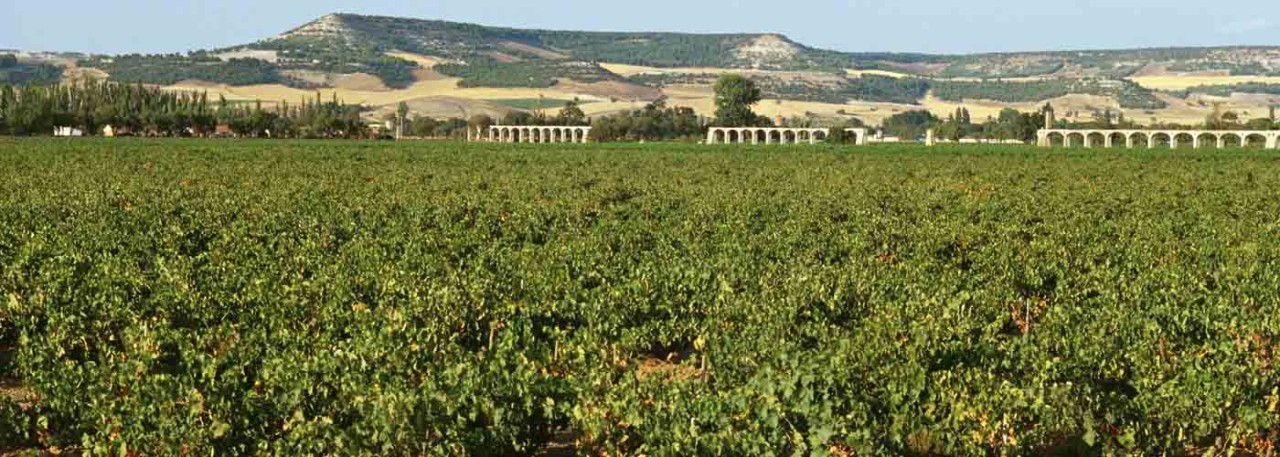Max. Summer temp. : 42 ºC
Min. Winter temp.: -20 ºC
Average rainfall: 460 mm annually
Average sunshine: 2,400 hours annually
.png.transform/rendition-xs/image_image%20(1).png)

Roa (Castile-Leon)
Max. Summer temp. : 42 ºC
Min. Winter temp.: -20 ºC
Average rainfall: 460 mm annually
Average sunshine: 2,400 hours annually
The Ribera del Duero is blessed by a combination of terroir, microclimate and a native grape that gives superb, complex red wines.
At this altitude Tempranillo (also known as Tinta del País or Tinto Fino) gives thin-skinned and refreshingly acid fruit, which in turn gives wines that are delicious when they are young but also have the capacity to age into magnficent Gran Reservas.
In the wake of the DO's creation in 1982 many vineyard sites were replanted and bodegas of every kind, ranging from small family operations to large cooperatives and single-estate bodegas, began to invest in modern winemaking technology. At the same time families who for generations grew and sold their grapes to bodegas have been building their own small wineries and the Regulating Council (Consejo Regulador) has been encouraging research and development projects ranging from computerized harvesting checks to alternatives to traditional pesticides.
This newly acquired collective expertise has made a huge impact on the quality of the wines, which are now exported right around the world. There is a wine museum in the castle at Peñafiel and a Centro de Interpretación del vino en Aranda del Duero (Burgos).
Regulatory Council
Consejo Regulador DO Ribera del Duero
C/ Hospital, 6
09300 Roa
Burgos
Tel.: +34 947 541 221
info@riberadelduero.es
www.riberadelduero.es
Sources:
- Spanish Ministry of Agriculture
Its wines are now exported right around the world.

